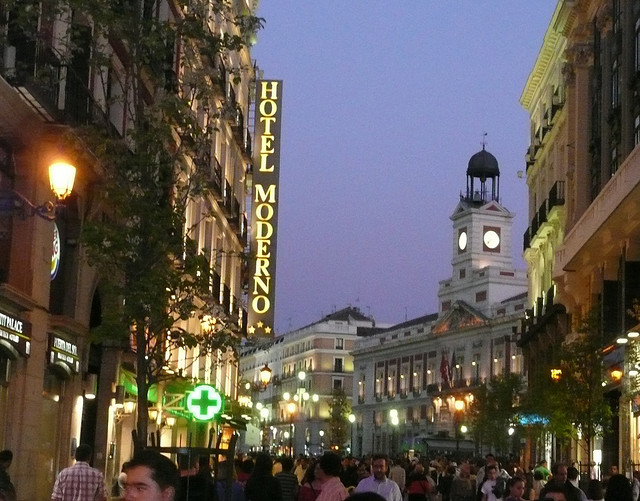Recent polls have voted Madrid as the 7th most popular place to live and work abroad. Scoring higher than not only Hong Kong and Singapore but also – and this maybe come as surprise to many – Paris. For a long time Paris held the number one spot, with its culture and relaxed lifestyle. It stood as the center for the arts, and its museums and festivals were known around the world. In fact, many people would say that you hadn’t traveled and worked in Europe if your destination was not linked in some way to the Parisian Culture. It is therefore understandable why some of our most well-known and much loved artists, poets and playwrights throughout history, choose this vibrant, colorful city as their base.
Nevertheless, with the dawn of the 21st century, new destinations become vogue for the modern traveler. One of those places is Madrid, with its rich and colorful history. The Madrid we know and love today only really came into its own after the death of Francisco Franco, the Prime Minister of Spain who had held office from 1926 until his death in 1975. With his death, new life was breathed into the once dictator-run capital of Spain.
It is not surprising really that Spain, and Madrid in particular, is now one of the top ten destinations for those who wish to experience life, and work in Europe. Indeed, there are many opportunities for those that wish to take them. If you were to pick the five best areas of Madrid to work in, you may find it a hard decision to make, as ShMadrid says each of the 21 districts carry their own charms, vibrancy and life. Indeed it may depend upon your chosen field of work, for Madrid and its 21 districts, also hold many different business opportunities for the worker from abroad.
If you just had to pick the five best areas of Madrid to work in, and therefore perhaps choose property to rent in Madrid, you may just choose the following five.
- Azca, for its financial district. Many corporate companies have their head offices here in one of the many skyscrapers that fill the skyline. Azca is also home to the famous El Corte Inglés department store.
- Barrio Retiro, which is a classic Spanish neighborhood that surrounds the Retiro Park. Notably famous for its beautiful sculptures and monuments, many or which date back to Queen Isabella II. Retiro is now populated with a bustling nightlife, bars, cafes and restaurants, the area is well known for its diversity in gastronomical fare. Of course, it goes without saying that this area attracts the young. It is perhaps the Parisian lifestyle center of Madrid, with curb side cafes, and the wonderful smells that waft daily from bustling eateries.
- Opera, Palacio Real, is the main shopping area for all of Madrid. Many of the up and coming fashion designers of today’s Madrid are displaying their creations to the world from here. It is maybe the Rodeo Drive of Spain.
- Malasaña is an area that comes alive after dark and is famous for its nightlife. It was also the home of the Movida movement during the 70’s and 80’s. This was a movement that took place in Madrid after the death of Francisco Franco. It may be more famously known for its resurrection of the Spanish economy, and the reason that Spain has its new modern identity.
- If you are studying in Madrid you may pick Lavapiés as your final option. It is traditionally one of the poorer areas, and offers some lower cost property to rent in Madrid. Near to the center of the city, it is one of the few places that still has a true Madrileño spirit. Of all the areas in Madrid, this is also the one area with a very high mixture of cultures that seem to blend together, like fine aged claret. This is perhaps one of the main reasons ShMadrid says it attracts so many artists and writers, giving it the feel of a true cosmopolitan area. Food and accommodation is also very cheap here, so making it ideal for students who have limited funds.
![]() Madrid is so beautiful, with its culture, arts, music, people, buildings and museums, there only remains one question to ask. Which five areas would you pick?
Madrid is so beautiful, with its culture, arts, music, people, buildings and museums, there only remains one question to ask. Which five areas would you pick?






